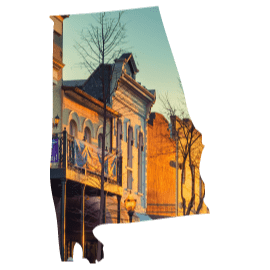Licensure Reciprocity: Alabama
Expanding the Pool of Teachers Policy
Analysis of Alabama's policies
Alabama appropriately supports licensure reciprocity by only requiring certified teachers from other states to meet Alabama's own testing requirements.
Commendably, Alabama does not grant any waivers of its testing requirements to out-of-state teachers. All out-of-state teachers, no matter how many years of experience they have, must meet Alabama's passing scores on licensing tests.
Alabama also offers its standard license to out-of-state certified teachers, without specifying any additional coursework requirements or relying on transcript analysis or recency requirements to determine eligibility.
Alabama is also a participant in the NASDTEC Interstate Agreement; however, the latest iteration of this agreement no longer purports to be a reciprocity agreement among states and thus is no longer included in this analysis.
Recommendations for Alabama
State response to our analysis
Alabama recognized the factual accuracy of this analysis.
Select another topic
Delivering Well Prepared Teachers
- Admission into Preparation Programs
- Elementary Teacher Preparation
- Elementary Teacher Preparation in Reading Instruction
- Elementary Teacher Preparation in Mathematics
- Middle School Teacher Preparation
- Secondary Teacher Preparation
- Secondary Teacher Preparation in Science
- Secondary Teacher Preparation in Social Studies
- Special Education Teacher Preparation
- Assessing Professional Knowledge
- Student Teaching
- Teacher Preparation Program Accountability
Expanding the Pool of Teachers
Identifying Effective Teachers
- State Data Systems
- Evaluation of Effectiveness
- Frequency of Evaluations
- Tenure
- Licensure Advancement
- Equitable Distribution
Retaining Effective Teachers
Exiting Ineffective Teachers
Research rationale
http://www.ncbex.org/ .

